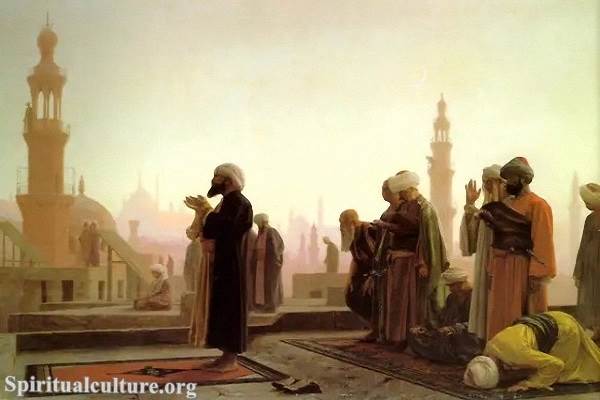The Shema is more than a prayer. It is a declaration, a commandment, a lifeline — whispered in the quiet moments of dusk, shouted in resistance, and sung in the joy of communion. For thousands of years, these six Hebrew words — “Shema Yisrael, Adonai Eloheinu, Adonai Echad” — have carried the full weight of Jewish belief and identity.
But what makes this short phrase so powerful? Why has it remained the heartbeat of Judaism across time, exile, and return?
As Spiritual Culture, we invite you to explore the Shema not only as a cornerstone of religious doctrine, but as a timeless call to unity, love, and sacred attentiveness — one that resonates across all spiritual seekers. In this article, we will unfold its meaning, explore its biblical roots, understand its daily significance, and contemplate its call for both ancient Israel and the modern soul.
The Shema in the Torah: A Sacred Commandment
A Voice from Deuteronomy
The Shema originates in Deuteronomy 6:4:
“Hear, O Israel: The Lord our God, the Lord is one.”
(שְׁמַע יִשְׂרָאֵל יְיָ אֱלֹהֵינוּ יְיָ אֶחָד)
This verse is immediately followed by the V’ahavta (“And you shall love…”), which calls for a full-hearted, soul-deep love of God. But these first words — the Shema — stand alone in their simplicity and cosmic scope.
They are not merely heard. They are received as a command to listen, to remember, to center life around the oneness of the Divine.
The Unity of God
The declaration “The Lord is One” affirms not only monotheism, but the indivisible unity of God. In a world of fragmented loyalties and competing voices, this statement draws the heart back to wholeness. It invites us to see one Source, one Creator, one moral foundation.
It is both a theological claim and a spiritual orientation: to see the oneness in all things, and to order life accordingly.
The Spiritual Power of Listening
What Does “Shema” Mean?
“Shema” is often translated simply as “hear,” but its meaning in Hebrew is deeper. It means to listen attentively, to obey, to take to heart. It is not passive hearing, but active engagement — a listening that becomes doing.
In a culture saturated with noise, the Shema invites us to sacred silence. To listen with the ears of the soul.
Hearing as Covenant
Throughout the Hebrew Bible, God repeatedly calls Israel to “listen” — not just to words, but to His will, His ways, His whisper.
When we recite the Shema, we are re-entering covenant. We are saying:
“I will listen. I will align my life with Your unity, Your commandments, Your love.”
Daily Recitation: A Rhythm of Devotion
Morning and Evening Faithfulness
Jewish tradition teaches that the Shema is to be recited twice daily — once in the morning and once in the evening (Deuteronomy 6:7). This practice shapes the day with remembrance of God’s presence.
From the rising of the sun to its setting, the Shema draws the believer back to the center: to God’s unity, and to the call to love and obey.
Upon Lying Down and Rising Up
This rhythm isn’t just symbolic — it is embodied faith. It marks transitions, grounds identity, and reclaims the sacred amid the mundane.
The Shema becomes a way to wake in awareness and sleep in surrender. A heartbeat of spiritual mindfulness.
Love, Law, and Legacy
“You Shall Love…”
Immediately following the Shema in Deuteronomy is the V’ahavta:
“And you shall love the Lord your God with all your heart and with all your soul and with all your strength.” (Deut. 6:5)
This love is not emotion alone. It is devotion, loyalty, obedience. It is love that encompasses every dimension of life.
To love God, in Jewish tradition, is to live the commandments — not legalistically, but relationally. Every mitzvah becomes a response to that love.
Teaching the Children
The Shema also commands the faithful to teach these truths to their children, to speak of them at home, on the road, at rest, and in motion. It is a call to transmit the sacred story — not only with words, but through life itself.
Thus, the Shema becomes the heartbeat not only of individuals, but of families and communities — of an entire people sustained by remembrance.
Symbols of the Shema: Mezuzah and Tefillin
Binding the Word
Deuteronomy 6:8–9 continues:
“Bind them as a sign on your hand and let them be as frontlets between your eyes. Write them on the doorposts of your house and on your gates.”
These verses are fulfilled through the wearing of tefillin — small leather boxes containing the Shema, worn during weekday morning prayers — and the placement of a mezuzah on the doorposts of Jewish homes.
These are not superstitions. They are embodied reminders of the covenant. Every time a hand touches the mezuzah, the Shema is recalled. Every morning the tefillin are wrapped, the body itself becomes a vessel of sacred memory.
A Home Filled with Shema
In this way, the Shema lives not only in prayer but in places, in practices, in the texture of everyday life. The home becomes a sanctuary. The body becomes a signpost of God’s oneness.
The Shema in Times of Crisis
Words of Faith in Death
The Shema is often the last words on the lips of the dying. It has been uttered by martyrs, whispered in gas chambers, clung to in moments of terror and transcendence.
In saying the Shema at the moment of death, one proclaims:
“My life belongs to the One. Even in the face of death, I hold to God’s unity.”
A Shield in the Storm
The Shema has been recited by Jews in hiding, in exile, in battle. It is a defiant affirmation of identity. A protest against despair. A song of unbreakable faith.
In such moments, the Shema is no longer just a prayer. It is a shield — of memory, of meaning, of belonging.
The Universal Echo of the Shema
A Call Beyond Borders
Though rooted in Judaism, the Shema echoes a universal longing — the desire for unity, meaning, and right relationship with the Sacred.
It speaks not only to Jews, but to all who seek to align life with love, order, and wholeness. In a divided world, its call is urgent:
Listen. Return. Remember.
Shema and Interfaith Wisdom
Many spiritual traditions teach the importance of listening deeply, of honoring the One, of integrating love and law. The Shema offers a bridge — not of syncretism, but of shared yearning.
To truly “Shema” is to listen to the Divine voice that calls to us through our conscience, through scripture, through creation — calling us back to oneness.
Reflect and Reimagine
The Shema is not just a relic of ancient worship. It is a living declaration, a breath prayer, a daily alignment. It reminds us that to believe in one God is to see the world as a whole, to live with integrity, to teach love through action.
For those within Judaism, it is the bedrock of faith. For those beyond, it is a mirror to examine:
- What do I center my life on?
- To what do I truly listen?
- Where do I find unity amid the noise?
As Spiritual Culture, we invite you to pause today — to listen, not just hear. Whether you whisper the Shema or simply open your heart to its spirit, may you find in its call the courage to return to what matters most:
“Hear, O Israel: the Lord our God, the Lord is one.”
And you shall love — with all your heart.



